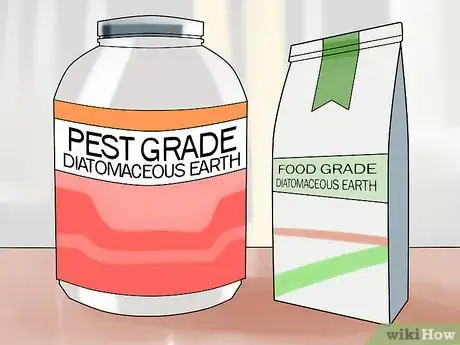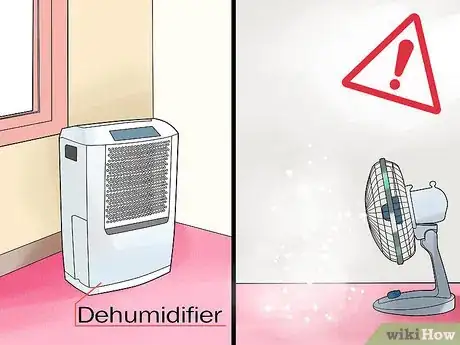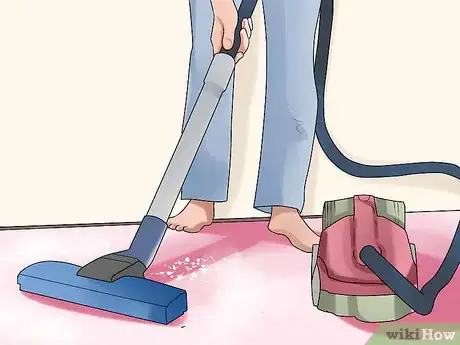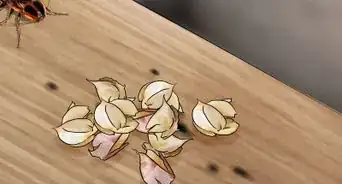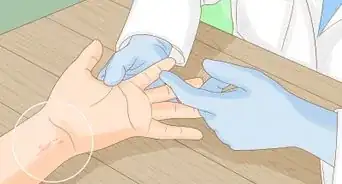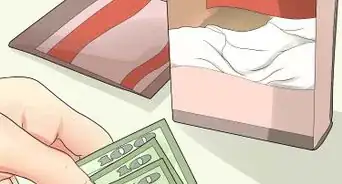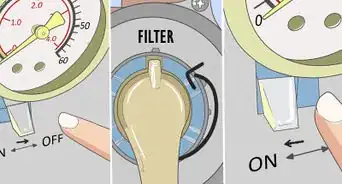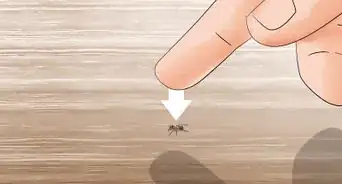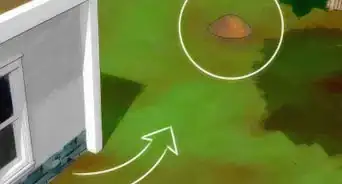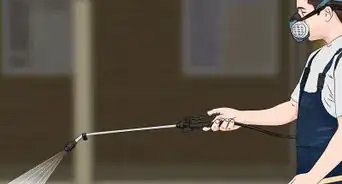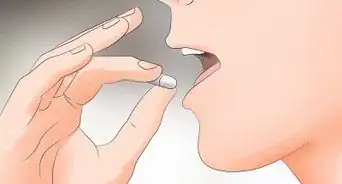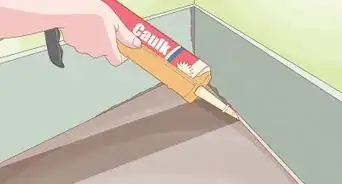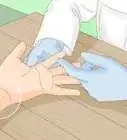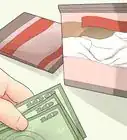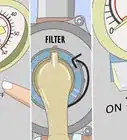This article was co-authored by Chris Parker. Chris Parker is the Founder of Parker Eco Pest Control, a sustainable pest control service in Seattle, Washington. With over seven years of experience, Chris specializes in Integrated Pest Management and doesn’t use any chemicals for pest removal. He offers removal services for ants, rodents, fleas, spiders, wasps, and more. Chris is a certified Commercial Pesticide Applicator in Washington State and received his bachelor’s from the University of Washington.
There are 8 references cited in this article, which can be found at the bottom of the page.
wikiHow marks an article as reader-approved once it receives enough positive feedback. In this case, 97% of readers who voted found the article helpful, earning it our reader-approved status.
This article has been viewed 294,834 times.
Diatomaceous earth is an all-natural product made from tiny fossilized water plants called diatoms. These plant particles have razor-sharp edges that cut through an insect's protective covering and dehydrate them, potentially killing the insect.[1] [2] These powdered fossils are a natural pesticide used mostly for bedbugs, but are potentially effective against any carpet pests. Because it tends to work slowly and sometimes unpredictably, it's best to follow other pest control practices at the same time, such as thorough cleaning and humidity control.
Steps
Preparing Your Materials
-
1Use pest grade or food grade diatomaceous earth. Diatomaceous earth (DE) comes in two forms. Most DE sold as a pest control treatment or labeled "food-grade" is safe for home use and not linked to serious health issues.[3] Never use pool grade or industrial grade DE in your home, since these forms can (eventually) cause permanent respiratory problems.[4]
- All DE products are actually a mix of the "safe" and "unsafe" types. Food grade DE still has a small amount of "unsafe" DE, and is still dangerous if inhaled in large quantities.
- DE sold for pest control has to meet specific safety standards and list safe instructions on the label (at least in the US), so this is usually the best choice. Food grade DE may not have a detailed safety label, since it is not intended to be used in pure, dry form, but it is similar to pest-grade DE and the risk of harm is low with the precautions below.[5]
-
2Follow safety instructions. Food-grade DE is meant to be stirred into food and eaten, so in general, it's pretty safe. However, the concentrated, dry powder can still irritate your lungs and eyes, particularly if you have asthma. and skin. Review these safety precautions before you begin:[6]
- Consider wearing a dust mask or eye protection while you're applying the DE to avoid breathing it in or getting it into your eyes.
Advertisement -
3Choose a dusting tool. Professional pest controls use special dusters to put down a fine, even layer of dust, but these can be hard for consumers to find.[7] You can use a feather duster, paint brush, or flour sifter instead. Spoon (don't pour) the DE onto the dusting tool slowly, to avoid a cloud of dust.
- Squeeze bottles or bellows are not recommended, since they cause too much drifting.[8]
Applying Diatomaceous Earth
-
1
-
2Dust a fine layer onto carpet edges. Carefully apply an even, barely visible layer of dust around the perimeter of the carpet. The insects need to crawl across the dust for it to injure them, and they're more likely to avoid piles or thick layers of dust.[11] [12] Thick layers of DE are also more likely to get kicked up into the air and irritate lungs or eyes.
- Carpets are usually only treated on the edges so human activity doesn't kick the dust into the air (where it's more likely to make you cough than kill insects). If the carpet is in a side room, you might be able to dust a larger area without any problems.
-
3Dust around furniture legs. Diatomaceous earth is not intended for use on upholstery or mattresses, where it can irritate human skin. However, a thin layer around the legs of furniture will affect any insects that crawl up onto the bed or couch.
- This won't stop the insects from reaching the furniture, but it will expose them to DE on the way and (hopefully) kill them a few days later.
-
4Keep humidity down. Diatomaceous earth is more effective in dry environments.[13] Run a dehumidifier in the room if you have one. A cross-breeze can also help, but avoid pointing fans where they could blow away the powder.
-
5Leave in the carpet as long as needed. As long as you aren't kicking up dust or coughing (which shouldn't happen with proper application), there's no need to remove the diatomaceous earth. It remains effective as long as it stays dry, and often takes a week or more to start killing insects. Since the insects may have laid eggs by then, leaving on the diatomaceous earth for several weeks will help prevent a rebound.
- Try leaving the DE down for a week, then vacuum it up and repeat the treatment. After about 3 weeks, you should break the cycle of eggs hatching and adults laying more eggs.[14]
-
6Remove the DE with a filterless vacuum. Diatomaceous earth is very hard and can quickly ruin a normal vacuum's filter. A normal vacuum might be fine for a single, light application, but a filterless vacuum or a shop vac are better choices if you plan to apply the DE multiple times.[15]
- There is no hurry to remove DE from your carpet unless you applied too much (leaving visible piles of dust). Just keep the proper tools in mind so you don't damage your normal vacuum cleaner during regular carpet cleaning.
-
7Use other pest control methods at the same time. It's hard to predict how effective the DE treatment will be. An insect population in one neighborhood may even be more resistant than the same insect species somewhere else. If you're still struggling with an outbreak, attack the insects with multiple treatments at once. Find out about more treatments for bed bugs, cockroaches, carpet beetles, or fleas.
-
8Consider leaving DE under the carpet edges. As long as DE stays dry, it can remain effective for months or even years.[16] If you can lift your carpet, consider leaving a thin layer of DE underneath the edges, where it won't get kicked up.
- It's best not to leave DE out in households with pets or young kids.
Community Q&A
-
QuestionDo I need to rub the DE into the carpet when applying?
 Community AnswerYes.
Community AnswerYes. -
QuestionAfter the initial application of diatomaceous earth, why do I need to apply another small amount?
 Community AnswerThe eggs won't be affected by the first round. So you want to retreat to kill any that might have been missed.
Community AnswerThe eggs won't be affected by the first round. So you want to retreat to kill any that might have been missed. -
QuestionShould I shampoo my carpets first?
 Community AnswerIf you do shampoo it first, you should have the carpet completely dry before applying the Earth.
Community AnswerIf you do shampoo it first, you should have the carpet completely dry before applying the Earth.
Warnings
- When applying diatomaceous earth for pest control and storage of food items, keep in mind that it is not the same as is used for charcoal filters or swimming pool filters. Though they are made from the same mineral compound, pool grade DE should not ever be used for pest control.⧼thumbs_response⧽
- Even food-grade DE irritates the lungs when inhaled. Although unlikely to cause long-term damage, it does contain small amounts of crystalline silicone dioxide, which has been linked to silicosis and other respiratory problems.[18]⧼thumbs_response⧽
Things You'll Need
- Professional pesticide dusting tool, feather duster, or flour sifter
- Diatomaceous earth
- Respirator or dust mask
- Gloves
- Eye protection
- Vacuum (ideally a shop vac or filterless vacuum)
References
- ↑ http://www.pctonline.com/article/pct1213-diatomaceous-earth-study/
- ↑ Chris Parker. Founder, Parker Eco Pest Control. Expert Interview. 18 February 2021.
- ↑ https://www.ncbi.nlm.nih.gov/pubmed/11876495
- ↑ http://npic.orst.edu/factsheets/degen.html
- ↑ http://npic.orst.edu/faq/de.html
- ↑ http://npic.orst.edu/faq/de.html
- ↑ http://www.mypmp.net/2009/05/01/bed-bugs-are-dusts-the-bed-bug-bullet/
- ↑ http://www.pctonline.com/article/pct1213-diatomaceous-earth-study/
- ↑ Chris Parker. Founder, Parker Eco Pest Control. Expert Interview. 18 February 2021.
- ↑ Chris Parker. Founder, Parker Eco Pest Control. Expert Interview. 18 February 2021.
- ↑ http://www.idph.state.il.us/envhealth/pcsaferoach.htm
- ↑ Chris Parker. Founder, Parker Eco Pest Control. Expert Interview. 18 February 2021.
- ↑ http://www.pctonline.com/article/pct1213-diatomaceous-earth-study/
- ↑ Chris Parker. Founder, Parker Eco Pest Control. Expert Interview. 18 February 2021.
- ↑ https://www.diatomaceousearth.com/blog/how-to-clean-up-diatomaceous-earth/
- ↑ http://www.mypmp.net/2009/05/01/bed-bugs-are-dusts-the-bed-bug-bullet/
- ↑ http://www.pctonline.com/article/pct1213-diatomaceous-earth-study/
- ↑ http://npic.orst.edu/factsheets/degen.html
About This Article
To apply diatomaceous earth, which comes as a powdery dust, use a feather duster or paint brush to apply an even, barely visible layer of dust around the edge of your carpet. Also, put the dust around the legs of beds, couches, and other furniture that might attract bedbugs or other insects. Then, just leave the dust alone for at least a week but preferably several weeks to do its job. Try to keep the area dry while the dust is at work, since it’s more effective in dry environments. You can do this by running a dehumidifier or opening windows to create a cross-breeze. For tips on getting the safest diatomaceous earth to use at home and dressing to protect yourself while you apply it, read on!

